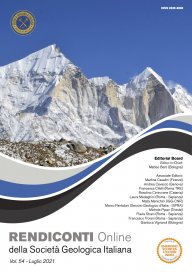

Unravelling the evolution of regional-scale shear zones with the aid of microstructures and textural analysis: an example from the central Himalaya
Laura Nania
Dipartimento di Scienze della Terra, Università di Firenze, Italy.
Corresponding author e-mail: laura.nania@unifi.it
DOI: https://doi.org/10.3301/ROL.2021.07
Volume: 54/2021
Pages: 32-40
Abstract
Microstructure and texture data on the Main Central Thrust zone (MCTz) in central Himalaya, on two nearly N-S oriented valleys in the Manaslu range (Western Nepal), are provided. Kinematic indicators at the meso and microscale support a south-directed flow. From south to north, greenschist facies paragneiss in the garnet-zone pass to amphibolite facies rocks in the kyanite-zone, suggesting an up-section metamorphic temperature increase. Combining microstructures and data from two different texture analysers (X-ray Texture goniometry and crystal-fabric microanalyzer) allowed to link the temperature path (from 460°C to 600°C up-section) and kinematic vorticity estimates. The “orientation of oblique grain shape fabrics” method was applied, pointing out a general shear flow (40-56% of pure shear) at the MCTz top. Results are in line with a “decelerating strain-path” model, as relatively high simple shear components are recorded at deeper structural levels. This work highlights that the combination of X-ray texture goniometry and crystal-fabric microanalyzer techniques is a good strategy to ensure quartz full-fabric.
Keywords
Get Full Text